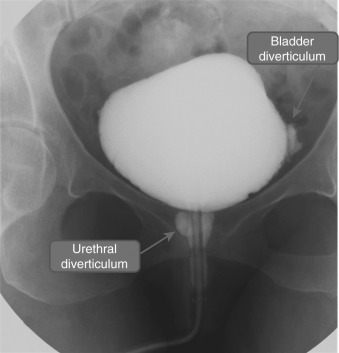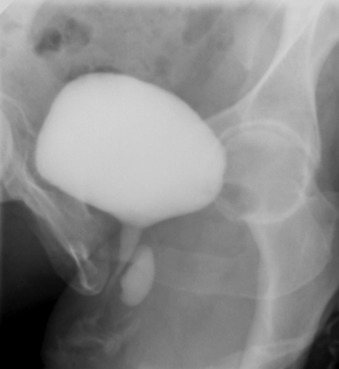Physical Address
304 North Cardinal St.
Dorchester Center, MA 02124
A urethral diverticulum is a focal outpouching of urethral tissue into the urethrovaginal space. It is thought to be due to postinflammatory dilatation and rupture of the periurethral glands (of Skene) into the urethra. Most urethral diverticula are acquired and occur in women between their third and sixth decades in age. The estimated prevalence of urethral diverticula is 0.6% to 6% of adult women. Congenital urethral diverticula are rare but have been reported in neonates and children.
It is widely believed that most diverticula result from infection of the periurethral glands. Other causes include urethral trauma from vaginal childbirth, instrumentation, and surgery.
Women with urethral diverticula manifest a range of symptoms, including dysuria, increased urinary frequency, dyspareunia, and postvoid dribbling. Approximately 20% of patients are asymptomatic. Physical examination can reveal periurethral “bogginess,” a palpable cyst, and expression of mucus or pus through the urethral orifice.
Urethral diverticula may be complicated by urinary incontinence (60%), recurrent urinary tract infections (30%), stone formation (10%), and, rarely, malignant transformation. More than 100 cases of urethral cancer complicating a diverticulum have been reported. Unlike de novo urethral carcinomas in which squamous carcinomas are predominant, 60% of urethral carcinomas developing in urethral diverticula are adenocarcinomas.
Imaging is adjunct to clinical examination and endoscopy. Apart from diagnosis of urethral diverticula, it assists in preoperative planning if repair is being considered.
Voiding cystourethrography (VCUG) is a commonly used technique to detect urethral diverticula ( Figures 79-1 and 79-2 ), with a sensitivity of 44% to 95%. However, successful demonstration of a diverticulum depends on the patient voiding during the study. If the patient is unable to void under examination, a postvoid film may demonstrate the diverticulum.


Double-balloon urethrography is more sensitive than VCUG but is invasive and technically difficult, requiring a specialized catheter and expertise to perform and interpret.
Both of these techniques are invasive, involve ionizing radiation, and may fail to demonstrate a urethral diverticulum with a narrow or sealed-off neck.
Computed tomography (CT) is the most sensitive modality to detect calculi that may develop within diverticula. CT also may be used to stage malignancy within a urethral diverticulum.
Become a Clinical Tree membership for Full access and enjoy Unlimited articles
If you are a member. Log in here